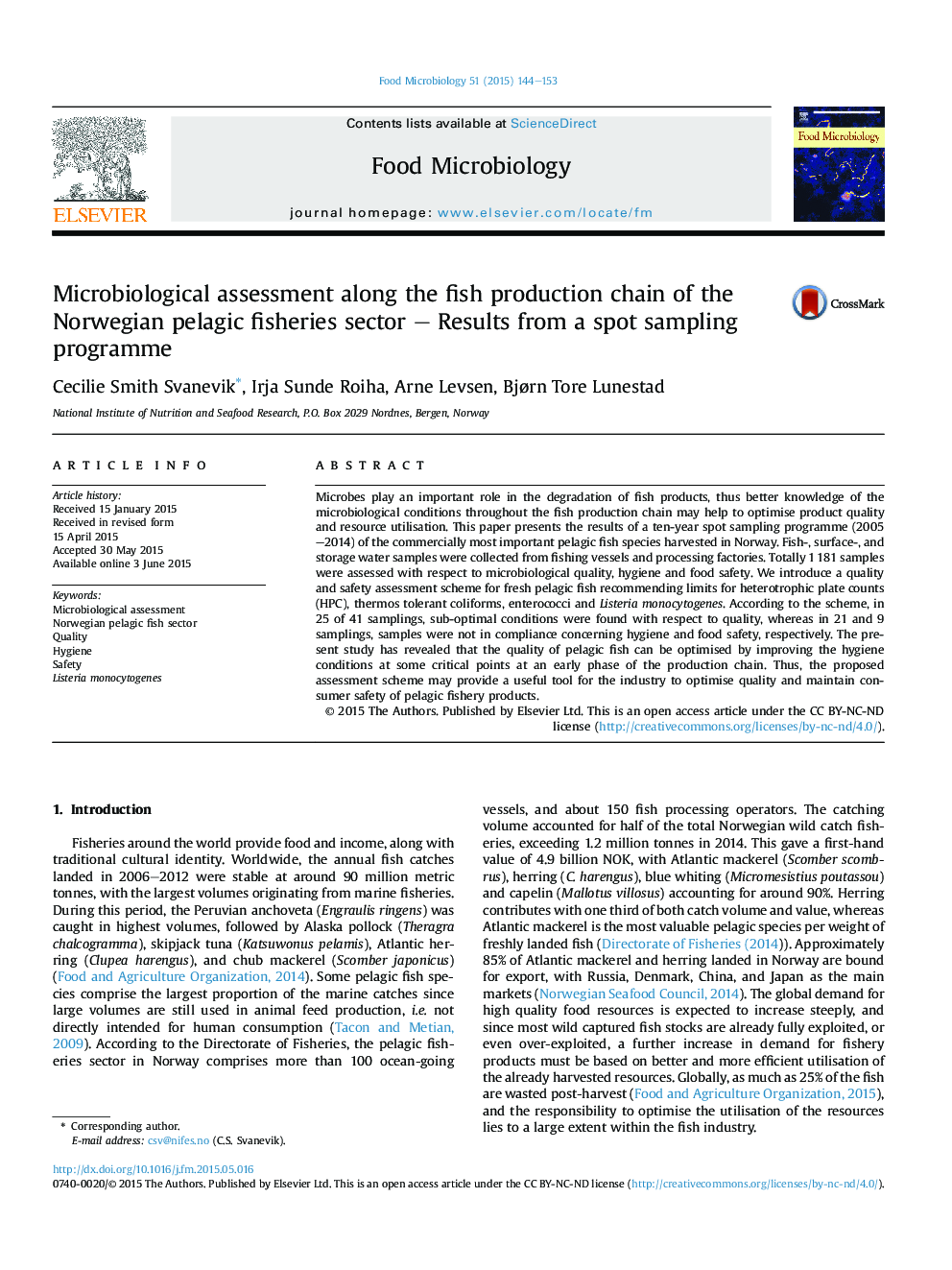| Article ID | Journal | Published Year | Pages | File Type |
|---|---|---|---|---|
| 6288498 | Food Microbiology | 2015 | 10 Pages |
Abstract
Microbes play an important role in the degradation of fish products, thus better knowledge of the microbiological conditions throughout the fish production chain may help to optimise product quality and resource utilisation. This paper presents the results of a ten-year spot sampling programme (2005-2014) of the commercially most important pelagic fish species harvested in Norway. Fish-, surface-, and storage water samples were collected from fishing vessels and processing factories. Totally 1 181 samples were assessed with respect to microbiological quality, hygiene and food safety. We introduce a quality and safety assessment scheme for fresh pelagic fish recommending limits for heterotrophic plate counts (HPC), thermos tolerant coliforms, enterococci and Listeria monocytogenes. According to the scheme, in 25 of 41 samplings, sub-optimal conditions were found with respect to quality, whereas in 21 and 9 samplings, samples were not in compliance concerning hygiene and food safety, respectively. The present study has revealed that the quality of pelagic fish can be optimised by improving the hygiene conditions at some critical points at an early phase of the production chain. Thus, the proposed assessment scheme may provide a useful tool for the industry to optimise quality and maintain consumer safety of pelagic fishery products.
Related Topics
Life Sciences
Agricultural and Biological Sciences
Food Science
Authors
Cecilie Smith Svanevik, Irja Sunde Roiha, Arne Levsen, Bjørn Tore Lunestad,
